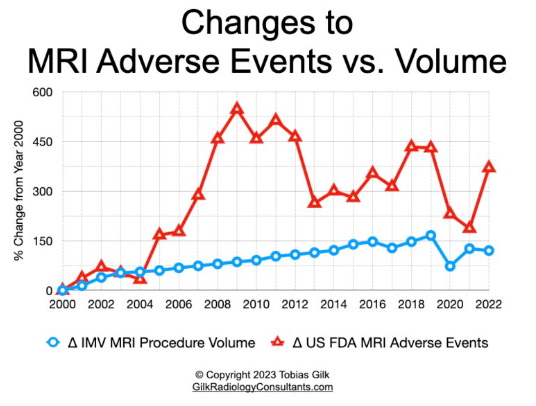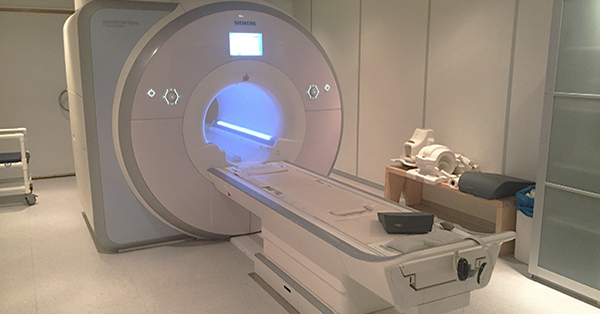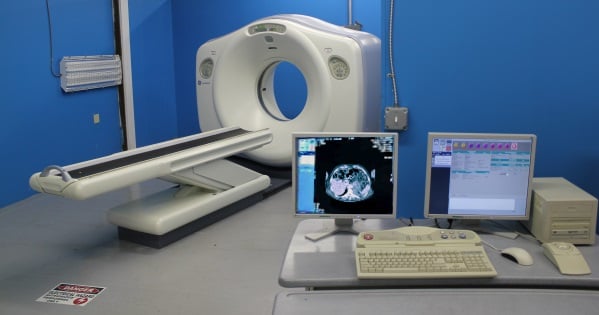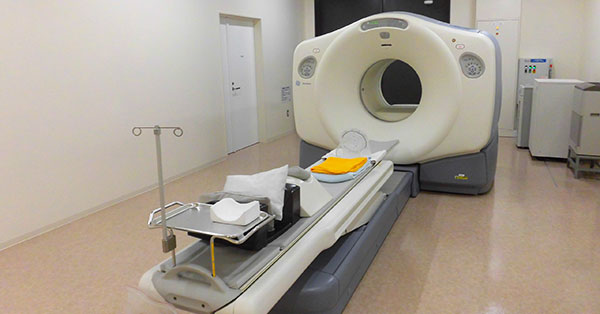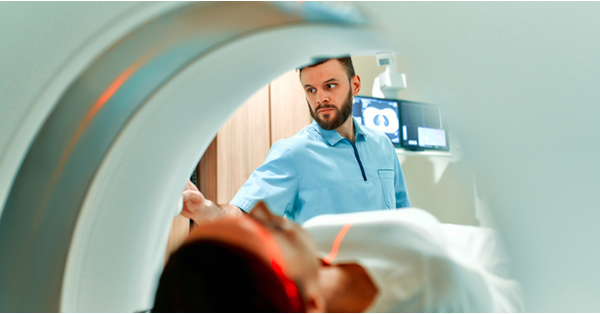
You may have heard of the recent MRI incident that occurred in a Northern California hospital. And just weeks prior in Brazil, a fatal accident occurred in which a man was shot by his own gun in an MRI suite.
While fatalities and physical injury related to MRI incidents are rare, nearly every incident that occurred could have been avoided if best practice procedures were in place and followed.
So the question stands: what needs to happen to ensure patients and medical staff are safe before and during MRI scans?
How Common are MRI Accidents?
Let's start with the facts about with how common MRI accidents are.
In The MRI Accident Chart (2000-2022) from Gilk Radiology Consultants founded by MRI safety expert Tobias Gilk MRSO, MRSE, we can see changes to MRI adverse events vs. procedure volume.
As indicated by the chart, MRI adverse events are greater in number and represent a greater proportion of MRI exams in 2022 compared to 2000. An MRI patient today is at a higher risk for an adverse event vs. 20+ years ago.
Although many of these incidents can range from burns to projectiles, or implanted device complications, many radiologists agree that the real danger is the lack of education and standardization.
So, what can you and your facility do to prevent these adverse events from happening?
The answer is clear: implement and maintain consistent safety protocols and properly train MRI personnel annually.
STATE-LEVEL "Requirements"
Let's talk about state-level "requirements". Currently, state departments of health do not outline required MRI safety protocols. In 2021, the FDA released a guidance document that gives suggestions for safety protocols. However, these suggestions are not legally required, as they are non-binding recommendations.
MRI machines in different states must get a certificate to ensure scans are safe and high-quality. This does not apply to pre-scan safety protocols are not included in this requirement. So, without legal requirements in place, what are facilities to do? Take training and implementation into your own hands.
Let's review clear MRI safety procedures and training that can set patients and personnel up for success when it comes to MRI scans.
Facility Training
First, facilities can view the American College of Radiology MR Safety manual for a full list of MRI safety policies and procedures.
It should be noted as of March 2023, ACR announced updates to their ACR manual on MR safety and opened public comments on the manual until April 14th. Visit the ACR website to stay up to date on their manuals' updates and additional MRI safety practices.
MRI safety policies facilities should implement include:
- Assigning a physician MRMD who is responsible for ensuring MRI safety practices and guidelines are established and maintained for the facility
- Assigning MRI personnel and non-MRI personnel
- Awareness of ACR safety zones I-IV
- MRI Screening Forms for patients
- Educating medical personnel on MRI safety
If this list seems overwhelming, know that you don't have to take this on alone.
For healthcare institutions looking for MRI safety training, safety evaluations, and more, you have options! Resources and training courses can be found through Gilk Radiology Consultants, LLC (GRC), Brown University, and MTMI to help you improve your MRI safety knowledge, policies, and procedures.
The Takeaway
Patient and personnel safety are the #1 priority with MRI Safety.
While state regulations do not outline specifics on what facilities should maintain as far as protocols go, facilities should maintain guidelines to avoid an MRI event from occurring.
While accidents related to MRI Magnets are rare, they do occur, and it is a facility's job to ensure proper training, and procedures are in place to avoid severe injury.

Ryan Schock



